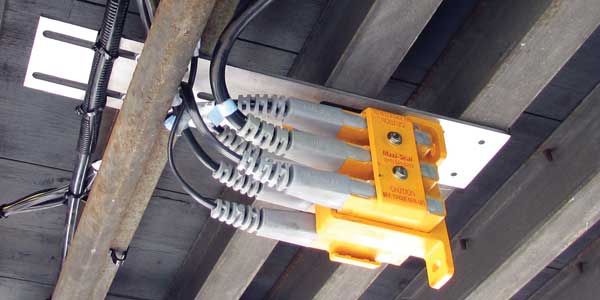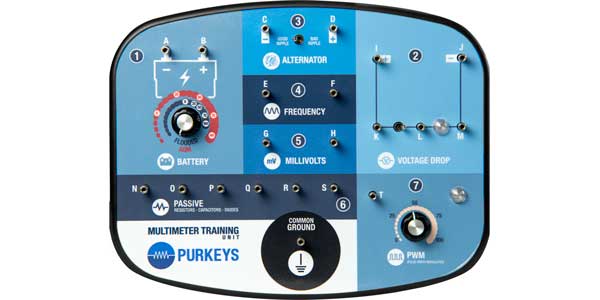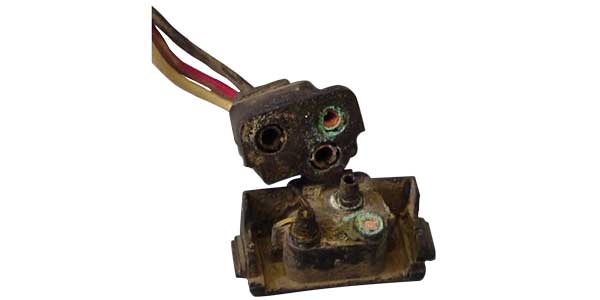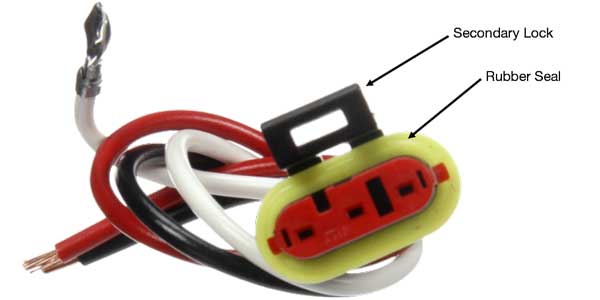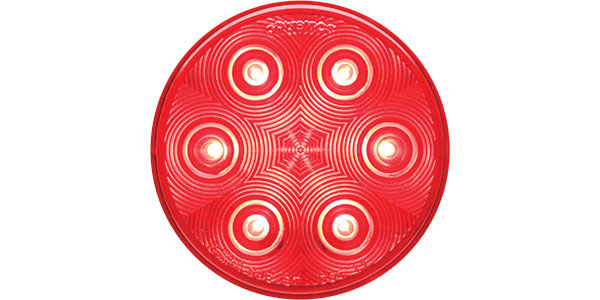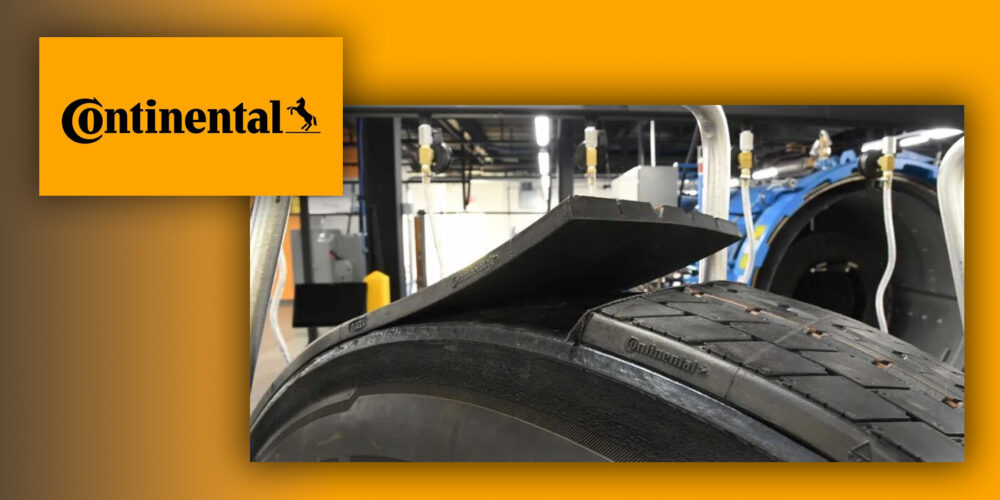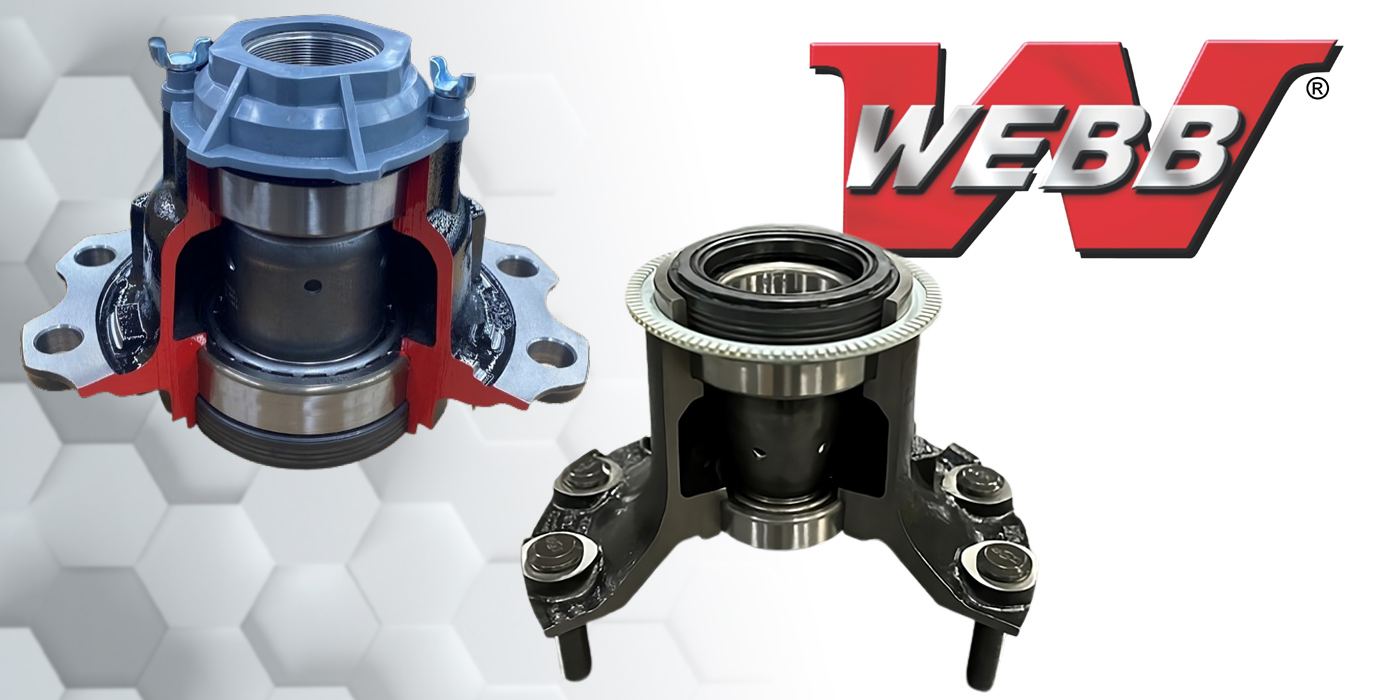When it comes to tractor-trailer electrical connections, there is no such thing as “plug and play.” In other words, all electrical connections need to be secure and properly maintained.
“Testing in the proper sequence is critically important to not only perform the correct test, but also in the correct sequence and repair as you go,” says Bruce Purkey, chief creative engineer at Purkey’s Fleet Electric. “Many alternators are returned for warranty for ‘low voltage’ regulation, when in fact the real issue is that the batteries are defective on the vehicle. The proper sequence is to charge and test the batteries, test the charging system for voltage drop then test the alternator output as outlined in the Technology and Maintenance Council (TMC)’s RP-129. Some of the basic preventive maintenance procedures to help ensure that electrical connections are protected, are addressed in RP-129, which provides great guidance in testing the charging and cranking system of the tractor; as well as TMC RP-179, which details how to test liftgate charging systems. These not only show the sequence and how to they give acceptable values of voltage drops.”
With all the add-on technology in today’s trucks, and cab comfort features for drivers, how can fleets ensure that vehicle electrical systems are spec’d and maintained to handle the electrical loads?
“When the engine is off, there is no charging from the alternator and all energy is being supplied by the batteries,” Purkey says. “Obviously, when the engine is running the alternator is taking care of the loads and also charging the batteries.
So how do you accomplish both? “You can’t,” Purkey answers, “but there are some technologies that can help. For instance, the new thin plate pure lead AGM batteries will accept more charge faster and more efficiently, which will reduce the amount of time it takes to recharge the battery pack; plus, they’ll live longer.
“In addition,” he continues, “the new high efficiency alternators provide more charge capacity and reduce the time to recharge. You can also add devices like inverters, which must have low voltage protection, not just for the inverter but the vehicle in general, as the vehicle must have enough battery power to start at the end of the rest period.”
Purkey explains that his company has offered fleet training for the last 27 years. “We host training programs, give webinars and do on-site training,” he says. “We also do in-depth audits for fleets where we look at all aspects of the fleets electrical repair methods. This includes the test equipment they buy, how they use it and the parts they buy for repairs. Buying a great tester and not training your folks on how to use it will result in less-than-hoped-for results.”
Seven-way connections
One of the most overlooked areas for electrical problems is the electrical connection at the tractor.
“According to top fleets, the seven-way electrical assembly is disconnected 99% less on the tractor side than on the trailer side,” says Megan Vincent, marketing manager for Phillips Industries. “This means the connection is cleaned only 1% of its life on the tractor, causing it to corrode faster. The most common warranty claim for a seven-way connector is because of loss of power to the blue circuit, due to corrosion buildup. This buildup starts at the front of the plug connector and is caused by several things: chemical deicers; a constant current running through the blue pin when the tractor is on; and a major lack of maintenance on the tractor side.”
Because all regular plugs and sockets are interchangeable by competitors, it makes the union more prone to size differences—meaning in a best-case scenario you have .3 mm of extra diameter space between the unions, leaving it vulnerable to contaminants. More than 90% of water intrusion occurs around the front of the plug, between the connections. Interchangeable plugs and sockets mean there will always be a certain amount of contamination leaking into the connection.
“The first line of defense is to purchase products that are designed to combat corrosion,” Vincent continues. “Using nylon, or molded materials, instead of metal is an easy way to prevent corrosion. For example, our Quick Connect Modular System, otherwise known as the Sta-Dry QCMS2, is a hybrid, a Sta-Dry modular socket and plug in one. The union eliminates the socket from the connection and mates directly with the QCS boot.
“Another important, and rather inexpensive, tip is to clean connections regularly using a plug and socket cleaning brush,” she adds. “Be sure to apply dielectric grease to dry connections before reconnecting.” With all the new innovations, it is best to first decide what application that specific vehicle will be used for. Then talk to your local tractor and trailer dealers. They will know the best equipment to add to the vehicle for what it needs.
Ensure protection
“Fleets need to protect vehicle lighting systems,” begins Brad Van Riper, senior vice president and chief technology officer for Truck-Lite. “A long-lasting vehicle lighting system always starts with a good design and an effective pre-delivery inspection to assure that the sealed wiring harness and lighting system is properly installed. Corrosion is perhaps the biggest culprit plaguing harness and lighting systems. Physical damage and poor repair methods are often the entry point for moisture and corrosion, as well as connectors that are damaged or improperly installed. Corrosion is often indicated by voltage drops that result in dim, flickering or failed lights. The damaged wiring frequently allows saltwater to wick up the wiring harness, causing green corrosion to infiltrate the entire system.”
Truck-Lite recommends the use of sealed connectors with a secondary lock to ensure that connections are fully engaged and protected from road spray.
“Furthermore,” Van Riper adds, “the use of wire probes or picks to check voltage or continuity should be immediately discontinued, as puncturing the wire allows for moisture to wick throughout the entire electrical system, corroding it from the inside out. Also, the green corroded wire should be removed and any splices or repairs made in the field should be covered with a melt-able, heat-shrinkable tubing. When using a multimeter to troubleshoot a wiring harness system, it is important to avoid the practice of back-probing a connector, which has been found to damage the connector’s seals, causing a direct path for moisture to enter the sealed connector.”
Stick to the basics
A periodic review of the integrity of the wire harness is helpful during preventative maintenance sessions. In addition to using locking, sealed connectors and discontinuing any practice that punctures wires, Van Riper recommends using a dielectric compound or spray on all electrical connections to ensure protection against moisture and debris.
“It has been more than 25 years since the release of Truck-Lite’s first-generation LED lighting products,” he says, “and we have seen continuous improvement in the reduction of the cost of the lamps and maturing design concepts. However, there are still a surprising number of fleets using incandescent bulb technology. We find that fleets that have a good system for measuring cost of operation find it an easy decision to select LED technology for their lighting products. New generations of electrical components include improved sealing of the entire wiring harness system and more standardized design, engineering and repair practices. Similarly, Truck-Lite seals its lighting circuitry in epoxy to protect against shock, moisture and vibration, and offers a wide range of sealed, locking connectors to further protect electrical components.”
Protecting lighting
Any non-sealed connectors such as PL3 and PL10 plugs may be an entry point for corrosion if not properly inspected and maintained. “Non-functioning lights are caused by damage (strikes) or corrosion introduced into a trailer’s wire harnesses system,” says Mark Assenmacher, director of marketing for Peterson Manufacturing Co. “However, this damage can be controlled by keeping non-sealed electrical connections generously coated with high quality dielectric grease, and by consistently inspecting electrical components and harness for damage, breached insulation, and exposed wiring.
“Always protect harness components with properly installed grommets wherever wiring passes through openings,” Assenmacher continues. “Use split or corrugated loom to prevent chafing and cuts. Zip-tie all harness wiring to properly secure it, yet allow flex where needed. Keep wiring well away from sharp edges and corners. Never puncture wiring insulation with a probe-type circuit tester. Our Defender lighting and harness system offers a comprehensive 10-year warranty against corrosion.”
Installation flexibility
Modular harness, wiring and lighting systems provide design and installation flexibility by using standardized connectors that snap together.
“These systems enable OEMs to structure power delivery configurations for an endless variety of vehicles,” says Brett Johnson, president and chief executive officer of Optronics International. “The snap-together design of a modular technology means that there are many connection points, which is both the system’s strength and its weakness.”
Modular connectors can provide multiple points of entry for moisture, and the failure of just one connector in the system can allow corrosion to migrate throughout the system, Johnson explains. Maintained correctly, today’s modular wiring harness and lighting system should provide years, if not decades, of service.
“Sadly, power delivery systems that are not maintained properly can become unreliable and can cause service, maintenance, safety and legal issues,” he says. “Moisture and corrosion can start working on a vehicle even when it’s in the construction phase. It’s best for fleets to take control from the time they take possession.”
Johnson recommends that during an inspection, knowledgeable staff should confirm that cables, wiring and lighting are correctly installed and functioning. Things to look for include: wires and cables that are being forced into turns that bend the wires too sharply; or cables and wires that are making contact with any metal edges, or that could make contact under the dynamic forces of operation can be at risk. Inspectors should pay special attention to areas where wires pass through any metal structures such as walls, cross members and body cavities.
“They should also keep an eye out for improperly installed ring terminals connected to frame members with the potential of causing a galvanic response from the contact of two dissimilar metals,” he adds.
Johnson is adamant that electrical system longevity and viability is directly correlated to the execution of an ongoing planned maintenance protocol. OEMs must often run wiring in high-moisture areas, and sometimes connectors are located there as well. If inspectors see connectors in places like just above or behind tires, a fleet may want to add supplemental protection like plastic looms, moldings or tubing. This secondary level of protection can reduce the likelihood of high-pressure moisture intrusion, and can diminish damage from rocks, road debris and ice accumulation that can all play a role in system degradation.
“Fleets that want to maximize the value of the trailers they operate will want to take the extra effort of up-fitting their trailer’s power delivery system as they see fit,”
Johnson says. “Even a modest amount of system augmentation can really pay off in the long run.”
Problem indicator
Johnson says that a wiring harness problem generally turns out to be one or more of the following conditions: a failure due to a grounded circuit, a failure due to an open circuit and/or a failure due to a short circuit.
“LED lamps are designed to provide 100,000 service hours, so if an LED lamp fails, it could indicate a larger systemic problem,” Johnson says. “Service techs should start with the failed lamp and work their way toward the harness.”
He reiterates that a technician should never puncture a cable’s protective insulation with a circuit tester probe.
“A fleet’s regular PM protocol should require a thorough assessment of a vehicle’s whole electrical and lighting system by maintenance staff, but fleets should train drivers to correctly conduct a lighting and electrical pre-trip inspection before they haul any load,” he advises. “Pre-trip inspection training alerts every driver that lighting and electrical problems are critical to the driver’s safety and that of the driving public. This training makes the driver a part of the fleet’s overall emphasis on safety and focus on minimizing CSA violations.”

